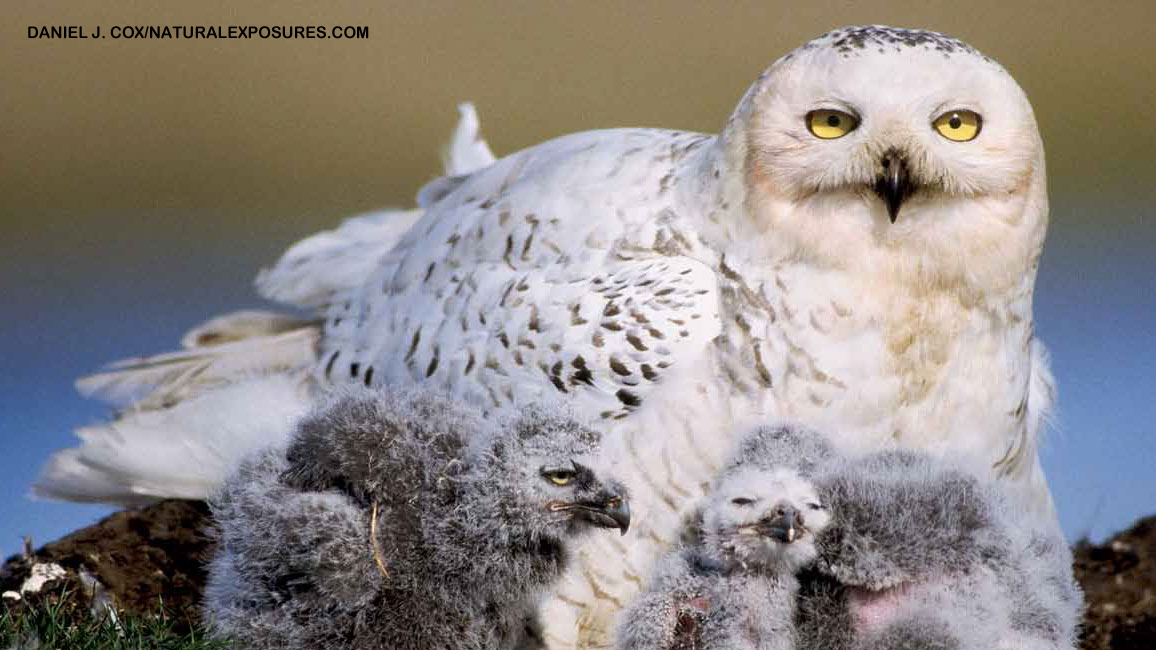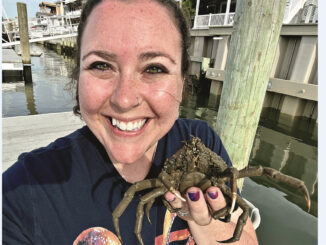
Snowy Owls
By Gerry BishopWhat’s it take to survive in the cold and windy Arctic? A snowy knows!

Welcome to the wild and treeless land called the Arctic tundra. It’s springtime, but the weather can still be wintry. Look closely and you’ll see something that will make you glad you’re here, though—a snowy owl and her nest of white eggs.
A FAMILY BEGINS
A couple of months ago, the mother owl was busy scratching a shallow, bowl-shaped nest into the ground. A cold wind blew, and snow still covered much of the tundra. Finally, the nest was ready. The owl laid one egg, sat on it for about a day, and then laid another. Over the next few days, she laid more eggs, until there were six.
The mother owl sat on the eggs, day and night, for a little over a month. Her mate brought her food, so she didn’t have to leave her eggs unguarded. Then the first little chick hatched, followed every other day by another. After a week or so, the nest was full of fluffy chicks. Each chick was covered with a coat of soft, white feathers called down.

FEEDING THE FUZZIES
Soon after hatching, all six chicks demanded to be fed. So now, with many hungry mouths to feed, the male owl is busier than ever, catching prey. Any small- or medium-sized creature makes a fine meal for a snowy owl. But at the top of the menu are little hamster-like rodents called lemmings.
To catch his prey, the male owl perches on a small hill or large rock, looking and listening for the slightest movement or sound. Suddenly something stirs. The owl takes off and swoops low over the ground. Then he drops like a rock and grabs a lemming with his powerful, clawed feet. (These claws are called talons.) After a catch, the father owl delivers his prey to the nest and goes looking for more. Meanwhile, the mother owl tears the lemming into bite-sized pieces for her chicks. (Later, when they’re big enough, the chicks will swallow their prey whole!)
TOUGH TO SURVIVE
Weeks pass, and the chicks grow larger. They’ve shed their coats of white down and grown gray ones. And by now the older ones are scampering away from the nest, trying out their legs and wings. For the busy parents, it’s hard to keep an eye on all of the babies at once. And, of course, the growing chicks are demanding more and more food.
If there are plenty of lemmings and other small animals around, all the chicks get enough food to survive. But if food is scarce, the oldest and strongest owl chicks might get all the food, while the little ones go without. This may seem cruel, but at least some of the chicks survive. Even when food is plentiful, the young owls face danger almost every day. If they get too wet and cold, they can die. And then there are the foxes, falcons, and other hungry hunters prowling around! Life is tough on the wide, open tundra.

FIERCE DEFENDERS
A nest on the ground, right out in the open, can be a dangerous place to be. But snowy owls are big, fierce fighters. If a predator dares to come close, the parent owls go on the attack. They swoop and dive, jabbing with their long, sharp talons.
And if that doesn’t do the trick? One of the parents may flop along the ground, dragging one of its wings. The predator may chase after that owl, fooled into thinking it’s found an easy target. Then, when the predator has been led far enough from the nest, the owl will fly back to its young. If the owls are lucky, the predator will not return.
GROWING UP FAST
It has been almost two months since the first of the little owls hatched. The oldest ones have replaced most of their gray down with feathers. They hop around more than ever, building up their leg muscles. They flap their wings and fly around in short bursts.
But even after they can fly, the young owls stay with their parents
for another two or three months. They have a lot to learn about living on their own. And learn they must. Only the strongest, toughest, and best prepared will survive the cold, dark Arctic winter that lies ahead.
















